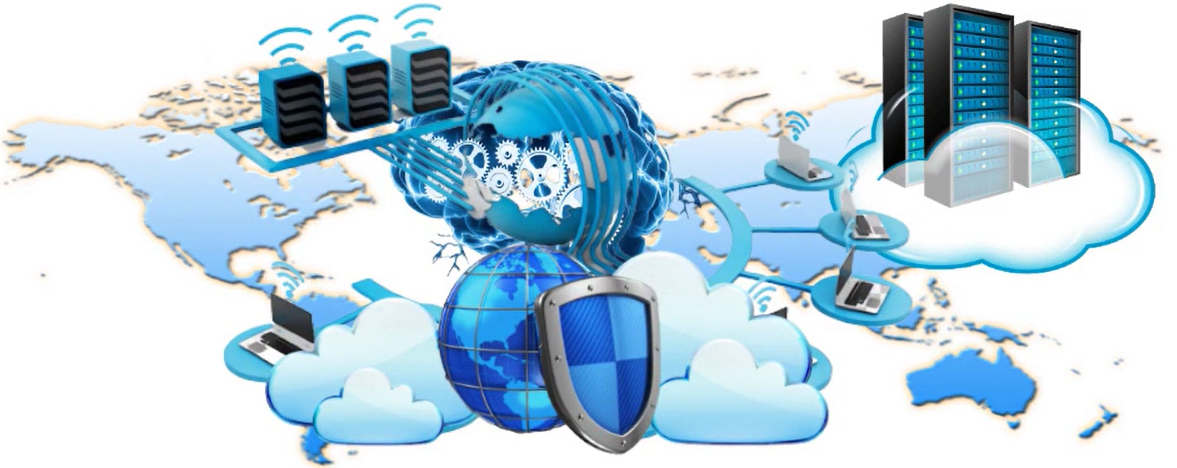In the computing world, cloud computing has increasingly been used and become popular in recent years, as it offers many benefits, including cost savings, flexibility, scalability, and accessibility. This article discusses cloud computing, its categories, history, and importance.
What is Cloud Computing?
Cloud computing is a revolution of computing technology that allows users to use computing resources, such as servers, storage, databases, applications, and services, over the Internet. These resources are typically provided by a third-party cloud service provider, who manages and maintains the Infrastructure required to deliver these services.
Cloud computing allows users to access and use these resources on demand without investing in expensive hardware or Infrastructure. It also enables users to scale up or down their usage of these resources as needed, paying only for what they use.
Types of Cloud Computing Services
There are several types of cloud computing services, including:
Software as a Service (SaaS)
This model delivers software applications over the Internet, eliminating users needing to install and maintain Software on their computers.
Infrastructure as a Service (IaaS)
This model provides virtualized computing resources, such as servers, storage, and networking, over the Internet, allowing users to build their virtual Infrastructure.
Platform as a Service (PaaS)
This model provides a virtualized computing platform for developers to build, test, and deploy applications over the Internet without the need to manage the underlying Infrastructure.
History of Cloud Computing
Cloud computing has transformed how businesses and individuals use and access computing resources, enabling the development of new technologies and services and supporting the growth of digital transformation and innovation.
Early Age
The concept of cloud computing dates back to the 1960s, when time-sharing was introduced, allowing multiple users to access a single computer simultaneously. However, the modern era of cloud computing began between the late 1990s to early 2000s, with the development of the Internet and the proliferation of affordable and high-speed networking.
Modern Age
In 1999, Salesforce.com became the first company to deliver business applications over the Internet, marking the birth of the Software as a Service (SaaS) model.
Amazon Web Services (AWS) launched in 2006, offering a range of cloud-based services, including storage, computing, and databases, which paved the way for Infrastructure as a Service (IaaS) offerings. Google also launched its cloud services in 2008 with the introduction of Google App Engine, offering a platform for developers to build and deploy applications on Google’s Infrastructure.
In 2009, the term “cloud computing” became mainstream, and the industry saw rapid growth and adoption of cloud-based services by businesses of all sizes. In 2010, the National Institute of Standards and Technology (NIST) released a definition of cloud computing, which has become widely accepted in the industry.
Today, cloud computing is ubiquitous, and many businesses rely on cloud-based services for their daily operations. The growth of cloud computing has also led to the building of new technologies and services, including serverless computing, edge computing, and multi-cloud strategies.
Why is Cloud Computing Important?
Cloud computing is important because it offers many benefits to businesses and individuals, making accessing and using computing resources easier and more cost-effective. Cloud computing is important for several reasons.
Cost savings
By using cloud computing services, businesses can save money on hardware, infrastructure, and maintenance costs. They can pay for only the needed resources and scale up or down as required, reducing the need for upfront investment in expensive hardware.
Scalability
Cloud computing services can scale quickly and easily to meet changing demands without the need for additional hardware or Infrastructure, which makes it easier for businesses to handle sudden spikes in traffic or usage and to respond to changing market conditions.
Security and accessibility
Cloud computing providers typically offer robust security measures to protect their customers’ data and Infrastructure. It can include data encryption, access controls, and regular security updates. The services can be accessed from anywhere with an internet connection, making it easier for remote workers and teams to collaborate and access the necessary resources.
Innovation and sustainability
Cloud computing has enabled the development of new technologies by providing the necessary computing resources to support these applications. By sharing computing resources across multiple users, cloud computing can be more energy-efficient than traditional computing models, reducing the environmental impact of computing.
Conclusions
Cloud computing services have become increasingly popular in recent years due to their many benefits, including cost savings, scalability, accessibility, security, innovation, and environmental sustainability.
As cloud computing continues to evolve, we will likely see the development of new services and technologies, including serverless computing, edge computing, and multi-cloud strategies, which will further enhance the benefits of cloud computing and support the needs of businesses and individuals in a rapidly changing digital landscape.
NOTICE: Visit TechGolly.com to stay informed about technology news, discussions, trends, advice, opinions, directories, markets, Investment Potential, insights, facts and views, insightful analysis, tech observation, and wisdom reflections. TechGolly covers a wide range of the latest technology news, including business news, product news, stock market news, future tech news, and research news. In addition, visit SoftwareAnalytic.com for software reviews, vendor reviews, software in-depth, and opinions. SoftwareAnalytic covers various software, including Accounting Practice Management, Business intelligence, Customer Relationship Management, Cyber Security Solutions, Data Management Platforms, Data Visualization Tools, Enterprise resource planning, Governance, Risk & Compliance, Human Resource Management, Sales Intelligence, Subscription Management, and Supply Chain & Logistics.



















